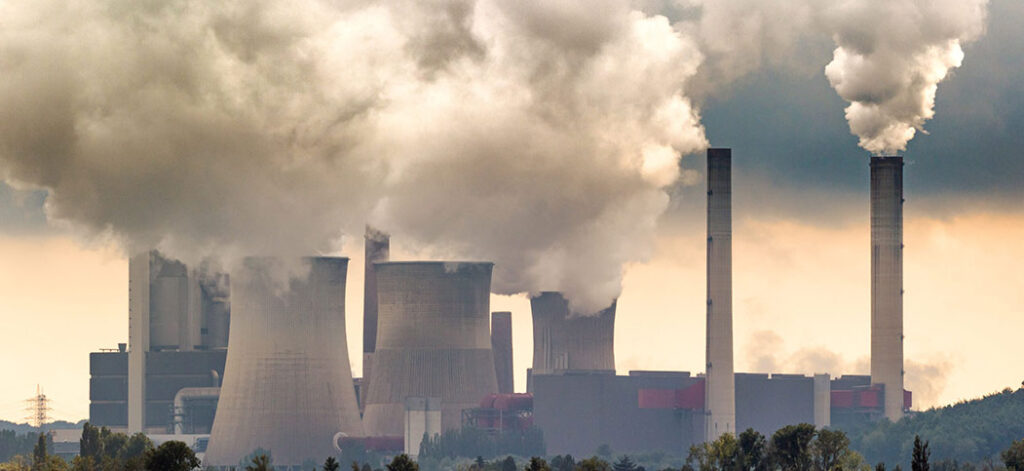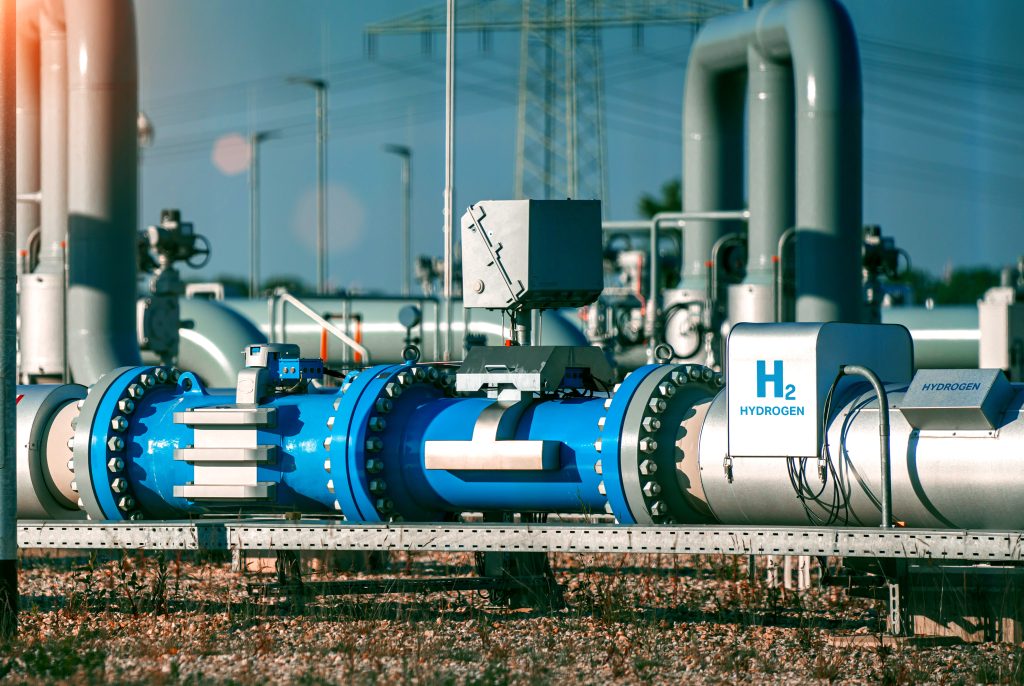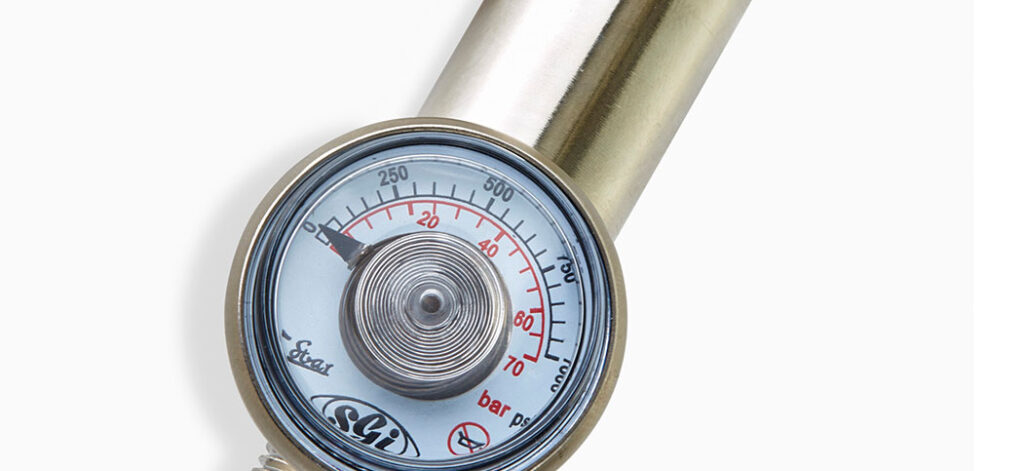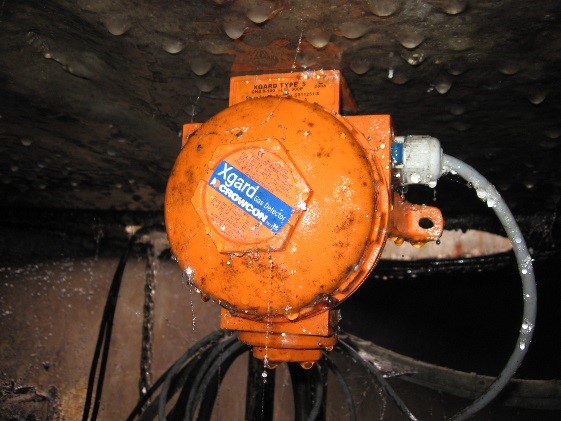Os gases e vapores produzidos, em muitas circunstâncias, têm efeitos nocivos para os trabalhadores expostos a eles por inalação, absorção através da pele ou ingestão. Muitas substâncias tóxicas são perigosas para a saúde em concentrações tão pequenas como 1ppm (partes por milhão). Tendo em conta que 10 000 ppm equivalem a 1% do volume de um espaço, verifica-se que uma concentração extremamente baixa de alguns gases tóxicos pode representar um perigo para a saúde. Mas quais são as caraterísticas dos gases?
Caraterísticas dos gases tóxicos:
| GÁS | DENSIDADE RELATIVA NO AR | FÓRMULA QUÍMICA | CARACTERÍSTICAS |
| Amoníaco | 0.59 | NH3 | Amoníaco é o único gás alcalino comum. A sua densidade é cerca de metade da do ar e tem um cheiro caraterístico. O seu nível máximo de segurança é de 25ppm, mas a sua alcalinidade torna-o altamente reativo com gases ácidos e cloro e a sua presença em atmosferas que contêm outros gases é frequentemente mascarada por este facto. Por exemplo, se o amoníaco e o cloro estiverem presentes em concentrações iguais, o resultado é uma nuvem de cloreto de amónio e nenhum dos dois gases.
O amoníaco é inflamável, com um LIE de 15%. É produzido em grandes quantidades em todo o mundo para fornecer fertilizantes, ureia para resinas, explosivos e fibras como o nylon. É também utilizado como gás refrigerante: esta aplicação está a aumentar com o fim dos CFC. Outra aplicação é a manutenção da esterilidade das águas de abastecimento após tratamento com cloro e dióxido de enxofre. |
| Arsina | 2.7 | ASH3 | A arsina é um gás incolor, inflamável e altamente tóxico. Tem um odor a alho ou peixe que pode ser detectado em concentrações de 0,5ppm e superiores. Como a arsina não é irritante e não produz sintomas imediatos, as pessoas expostas a níveis perigosos podem não se aperceber da sua presença. É geralmente transportado em cilindros como gás comprimido liquefeito. O gás arsina é gerado quando os metais ou minérios em bruto que contêm impurezas de arsénio são tratados com ácido. O gás arsénio é também utilizado na indústria de semicondutores quando se deposita arsénio em microchips. |
| Bromo | 5.5 | Br2 | Bromo é utilizado no fabrico de uma grande variedade de compostos utilizados na indústria e na agricultura. O bromo é também utilizado no fabrico de fumigantes, agentes anti-chama, compostos para purificação de água, corantes, medicamentos, desinfectantes, brometos inorgânicos para fotografia, etc. Também é utilizado para formar intermediários em síntese orgânica, onde é preferido ao iodo devido ao seu custo muito mais baixo.
O bromo é utilizado para produzir óleo vegetal bromado, que é utilizado como emulsionante em muitos refrigerantes com sabor a citrinos. O bromo elementar é um forte irritante e, na forma concentrada, produz bolhas dolorosas na pele exposta e especialmente nas membranas mucosas. Mesmo baixas concentrações de vapor de bromo (a partir de 10 ppm) podem afetar a respiração, e a inalação de quantidades significativas de bromo pode danificar seriamente o sistema respiratório. |
| Dióxido de carbono | 1.53 | CO2 | Apesar do facto de expirarmos dióxido de carbono e que está presente na atmosfera até cerca de 400ppm, sendo o seu nível máximo de segurança de 5000ppm (0,5%). É produzido durante a combustão e nos processos de fabrico de cerveja, destilação e outros processos de fermentação, e é um dos principais constituintes, juntamente com o metano, do gás de aterro e do gás de digestor do tratamento de águas residuais. O CO2 representa um perigo significativo na indústria cervejeira, especialmente porque o gás é mais pesado do que o ar e acumula-se a níveis baixos. Existe um certo grau de risco em locais com muita gente e mal ventilados, e este problema é frequentemente agravado pela deficiência de oxigénio. O CO2 é também utilizado para aumentar o crescimento das plantas através da elevação dos níveis normais em estufas, etc.
É inodoro e incolor e difícil de medir em níveis de ppm. A absorção de infravermelhos é a técnica de deteção habitualmente adoptada. |
| Monóxido de carbono | 0.97 | CO | Monóxido de carbonoO gás tóxico mais abundante é o gás de escape, que é inodoro e incolor. Com uma densidade semelhante à do ar, mistura-se facilmente e é facilmente inalado. É um conhecido "assassino silencioso" em ambientes domésticos.
Qualquer processo em que se verifique uma combustão incompleta do carbono combustível é suscetível de produzir monóxido de carbono. Por exemplo: motores a gasolina e a gasóleo, caldeiras a carvão, a gás e a óleo, e mesmo o fumo. A sua presença nas minas deve-se à combustão lenta do carvão. É também utilizado em enormes quantidades como agente químico redutor barato, por exemplo na produção de aço e noutros processos de refinação de metais e de tratamento térmico, e na produção de metanol por reação com hidrogénio. |
| Cloro | 2.5 | Cl2 | Cloro é um gás verde/amarelo, corrosivo e de cheiro pungente. A sua utilização mais conhecida é na purificação de água para abastecimento doméstico e em piscinas. É utilizado no fabrico de compostos clorados, como o PVC, e no branqueamento de papel e tecidos. É um gás muito pesado e é facilmente absorvido pela maioria dos materiais.
O comportamento do cloro torna-o um gás muito difícil de detetar (tão difícil que mesmo a calibração requer técnicas especiais). A utilização da Unidade de Amostragem Ambiental da Crowcon é uma forma eficaz de o detetar com sucesso em armazéns de cloro, minimizando o número de detectores necessários. |
| Dióxido de cloro | 2.3 | ClO2 | Dióxido de cloro é um gás amarelo-avermelhado que é um dos vários óxidos de cloro conhecidos. Pode decompor-se espontaneamente e de forma explosiva em cloro e oxigénio. O dióxido de cloro é utilizado principalmente no branqueamento da pasta de madeira, mas também é utilizado no branqueamento da farinha e na desinfeção da água.
O dióxido de cloro é também utilizado em conjunto com o ozono para a desinfeção da água, a fim de reduzir a formação de bromatos, que são agentes cancerígenos regulamentados. O dióxido de cloro é utilizado em muitas aplicações de tratamento de água industrial como biocida, incluindo torres de arrefecimento, água de processo e processamento de alimentos. Se inalado, o gás de dióxido de cloro provoca irritação no nariz, garganta e pulmões. |
| Diborano | 0.96 | B2H6 | Diborano tem um limiar de odor entre 2 e 4ppm, que é significativamente mais elevado do que o limite de exposição de 0,1ppm. As exposições prolongadas de baixo nível, como as que ocorrem no local de trabalho, podem levar à fadiga olfactiva e à tolerância dos efeitos irritantes do diborano.
Tal como acontece com todos os gases tóxicos, o odor não constitui um aviso adequado de concentrações perigosas. O diborano é mais leve do que o ar e a exposição pode provocar irritação da pele, das vias respiratórias e dos olhos em áreas mal ventiladas, fechadas ou baixas. O diborano é utilizado em propulsores de foguetões, como vulcanizador de borracha, como catalisador para polimerização de hidrocarbonetos, como acelerador de velocidade de chama e como agente dopante para a produção de semicondutores. |
| Óxido de etileno (ETO) | 1.52 | C2H4O | Óxido de etileno é utilizado como intermediário na produção de etilenoglicol, que é amplamente utilizado como líquido de arrefecimento para automóveis e anticongelante. É também utilizado para esterilizar géneros alimentícios e material médico. Trata-se de um gás incolor inflamável ou de um líquido refrigerado com um odor ligeiramente doce. O gás de óxido de etileno mata bactérias, bolores e fungos e pode ser utilizado para esterilizar substâncias que seriam danificadas por técnicas de esterilização, como a pasteurização, que se baseiam no calor. Além disso, o óxido de etileno é amplamente utilizado para esterilizar material médico, como ligaduras, suturas e instrumentos cirúrgicos.
O óxido de etileno é tóxico por inalação. Os sintomas de sobre-exposição incluem dores de cabeça e tonturas, progredindo com o aumento da exposição para convulsões, ataques e coma. A inalação pode fazer com que os pulmões se encham de água várias horas após a exposição. |
| Flúor | 1.3 | F2 | Atómico flúor e o flúor molecular são utilizados para a gravação por plasma no fabrico de semicondutores e na produção de ecrãs planos. O flúor é adicionado a algumas fontes de água da cidade na proporção de cerca de uma parte por milhão para ajudar a prevenir a cárie dentária.
Os compostos de flúor, incluindo o fluoreto de sódio, são utilizados nas pastas de dentes para prevenir as cáries dentárias. O flúor é altamente tóxico e deve ser manuseado com muito cuidado, devendo ser rigorosamente evitado qualquer contacto com a pele e os olhos. O flúor é um poderoso oxidante que pode provocar a ignição de materiais orgânicos, combustíveis ou outros materiais inflamáveis. |
| Alemão | 2.65 | GeH4 | Alemão arde no ar para produzir GeO2 e água.
O Germane é utilizado na indústria dos semicondutores para o crescimento epitaxial do germânio por MOVPE ou epitaxia por feixe químico. O Germane é inflamável, tóxico e asfixiante. |
| Cianeto de hidrogénio | 0.94 | HCN | O cianeto de hidrogénio é um veneno bem conhecido, um gás incolor e de cheiro doce, com um nível máximo de segurança de 10ppm durante 15 minutos. A principal aplicação industrial é a refinação de ouro. |
| Cloreto de hidrogénio | 1.3 | HCL | O cloreto de hidrogénio é um gás incolor altamente corrosivo e tóxico que forma fumos brancos em contacto com a humidade. Estes fumos são constituídos por ácido clorídrico que se forma quando o cloreto de hidrogénio se dissolve na água. O gás cloreto de hidrogénio, bem como o ácido clorídrico, são importantes na indústria, especialmente na farmacêutica, nos semicondutores e no tratamento da borracha e do algodão. Também é emitido pelas incineradoras de resíduos em que o PVC é queimado. A inalação dos fumos pode provocar tosse, asfixia, inflamação do nariz, da garganta e do trato respiratório superior e, em casos graves, a morte. |
| Fluoreto de hidrogénio | 0.92 | HF | Fluoreto de hidrogénio é utilizado na refinação de petróleo, fabrico de vidro, fabrico de alumínio, decapagem de titânio, purificação de quartzo e acabamento de metais.
O fluoreto de hidrogénio provoca irritação nos olhos, nariz e pele. A inalação de uma grande quantidade de HF também pode prejudicar os pulmões, o coração e os rins e, em última análise, pode causar a morte. Pode também queimar os olhos e a pele. |
| Sulfureto de hidrogénio | 1.2 | H2S | Sulfureto de hidrogénio é bem conhecido devido ao seu mau odor a ovo, que pode ser cheirado até menos de 0,1ppm. Concentrações elevadas (>60ppm) não podem ser cheiradas devido à paralisia das glândulas olfactivas, e a exposição pode levar à paralisia instantânea. H2O S é ligeiramente mais pesado do que o ar, pelo que os detectores fixos são normalmente montados a 1 a 1,5 metros do solo ou perto de potenciais fontes de fugas.
O H2Sé produzido durante a decomposição de materiais orgânicos, extraído com o petróleo (quando se diz que o petróleo é ácido) e é frequentemente encontrado no subsolo durante a construção de túneis e nos esgotos. É um constituinte do biogás e encontra-se em grandes quantidades nas estações de tratamento de águas residuais, nas estações de bombagem, nas prensas, nas caldeiras e em praticamente todos os locais onde as águas residuais são tratadas. Tem algumas utilizações industriais e é produzido como subproduto noutras (por exemplo, no fabrico de fibras). |
| Metil mercaptano | 1.66 | CH3SH | Mercaptano é adicionado ao gás natural (metano) para facilitar a sua deteção em caso de fuga: o gás natural no seu estado natural é incolor e inodoro. O mercaptano contém enxofre e tem um forte odor semelhante ao de couve podre ou de ovos estragados. Ao adicionar mercaptano ao gás natural, quaisquer fugas de caldeiras, fornos e aquecedores de água quente são facilmente detectadas sem necessidade de equipamento dispendioso.
Outras utilizações do mercaptano na indústria incluem o combustível para aviões, os produtos farmacêuticos, os aditivos para alimentos para animais, as fábricas de produtos químicos, a indústria dos plásticos e os pesticidas. É uma substância natural que se encontra no sangue, no cérebro e noutros tecidos de pessoas e animais. É libertado pelas fezes dos animais. Ocorre naturalmente em certos alimentos, como alguns frutos secos e queijo. O mercaptano é menos corrosivo e menos tóxico do que os compostos de enxofre semelhantes (H2S). Os níveis máximos de exposição recomendados na América do Norte variam entre 0,5ppm (limite de 15 minutos do NIOSH) e 10ppm (limite de exposição admissível da OSHA). O Heath and Safety Executive do Reino Unido não estabeleceu um valor para um limite de exposição no local de trabalho. |
| Óxido nitroso
Óxido Nítrico Dióxido de azoto |
1.53
1.04 1.60 |
N2O,
NÃO NO2 |
Existem três óxidos de azoto. Óxido nitroso (ou gás hilariante) tem um LTEL (de acordo com o documento EH40) de 100ppm. Não tem um valor STEL. Pode provocar a morte se for inalado de tal forma que não seja respirado oxigénio suficiente. A inalação de óxido nitroso de qualidade industrial também é perigosa, uma vez que contém muitas impurezas e não se destina a ser utilizado em seres humanos. O óxido nitroso é um anestésico geral fraco e geralmente não é utilizado sozinho em anestesia. No entanto, como tem uma toxicidade muito baixa a curto prazo e é um excelente analgésico, uma mistura de 50/50 de óxido nitroso e oxigénio é normalmente utilizada durante o parto, para procedimentos dentários e em medicina de emergência.
O óxido nítrico (modernamente designado por monóxido de azoto) e o dióxido de azoto são os constituintes dos chamados NOx que, juntamente com o dióxido de enxofre, provocam as chuvas ácidas. A principal causa da presença destes gases na atmosfera é a combustão de combustíveis fósseis nos motores dos veículos e nas centrais eléctricas. No ponto de escape, o óxido nítrico representa cerca de 90% dos NOx. No entanto, reage espontaneamente com o oxigénio em atmosfera livre para produzir dióxido de azoto. O óxido nítrico é um gás incolor, mas o dióxido de azoto é um gás castanho, ácido e de cheiro pungente. |
| Ozono | 1.6 | O3 | O ozono é um gás instável e é gerado à medida que é necessário. É cada vez mais utilizado em vez do cloro para o tratamento da água. Pode ser detectado a níveis baixos de ppm por via eletroquímica. |
| Fosgénio | 3.48 | COCL2 | Fosgénio é um importante produto químico industrial utilizado na produção de plásticos, corantes e pesticidas. Também é utilizado na indústria farmacêutica. O gás fosgénio pode aparecer incolor ou como uma nuvem branca a amarelo pálido. Em concentrações baixas, tem um odor agradável a feno acabado de ceifar ou a milho verde, mas o seu odor pode não ser sentido por todas as pessoas expostas. Em concentrações elevadas, o odor pode ser forte e desagradável.
Tal como acontece com todos os gases tóxicos, o odor não constitui um aviso adequado de concentrações perigosas. O gás fosgénio é mais pesado do que o ar, pelo que é mais provável que seja encontrado em zonas baixas. O gás fosgénio pode danificar a pele, os olhos, o nariz, a garganta e os pulmões. |
| Fosfina | 1.2 | PH3 | A fosfina é altamente tóxica e, por isso, tem um STEL de apenas 0,3 ppm. O gás fosfina é utilizado para o controlo de pragas por fumigação. A fosfina também é utilizada na indústria de semicondutores. |
| Silano | 1.3 | SiH4 | Silano à temperatura ambiente é um gás e é pirofórico, o que significa que sofre combustão espontânea no ar, sem necessidade de ignição externa.
Existem várias aplicações industriais e médicas para os silanos. Por exemplo, os silanos são utilizados como agentes de acoplamento para aderir fibras de vidro a uma matriz polimérica, estabilizando o material compósito. As aplicações incluem repelentes de água, selantes e proteção de alvenaria/concreto, controlo de graffiti e aplicação de camadas de silício policristalino em bolachas de silício no fabrico de semicondutores e selantes. Os efeitos na saúde incluem dores de cabeça, náuseas e irritação grave da pele, dos olhos e das vias respiratórias. |
| Dióxido de enxofre | 2.25 | SO2 | Dióxido de enxofre é incolor e tem um cheiro caraterístico a asfixia. Forma-se quando se queima enxofre e materiais que contêm enxofre, como o petróleo e o carvão. É altamente ácido, formando ácido sulfúrico quando dissolvido em água. Juntamente com os óxidos de azoto, é uma das causas da chuva ácida.
O SO2encontra-se em zonas industriais e perto de centrais eléctricas e é uma matéria-prima para muitos processos. Tem uma utilização no tratamento de água para substituir o excesso de cloro e, devido às suas propriedades esterilizantes, é utilizado no processamento de alimentos. É duas vezes mais pesado do que o ar e tende a cair ao nível do solo, pelo que uma Unidade de Amostragem Ambiental da Crowcon colocada perto do solo assegura uma deteção rápida em caso de fuga. Nota: O trióxido de enxofre S03 é encontrado nos gases de escape das centrais eléctricas. Não se trata de um gás, mas de um sólido, que sublima facilmente (ou seja, passa do estado sólido para o estado gasoso aquando do aquecimento). |
| Hexafluoreto de enxofre | 5 | SF6 | SF6 é utilizado na indústria da eletricidade como um meio isolante gasoso, altamente resistente à corrente eléctrica, para disjuntores de alta tensão, aparelhos de comutação e outros equipamentos eléctricos. SF6 sob pressão é utilizado como isolante em comutadores isolados a gás (GIS) porque tem uma rigidez dieléctrica muito maior do que o ar ou o azoto seco. Embora a maior parte dos produtos de decomposição tenda a reformular rapidamente o SF6O arco elétrico ou o efeito corona podem produzir decafluoreto de dissulfureto (S2F10), um gás altamente tóxico, com toxicidade semelhante à do fosgénio.
O plasma de SF6 também é utilizado na indústria de semicondutores como um condicionador e na indústria do magnésio. Tem sido utilizado com sucesso como marcador em oceanografia para estudar a mistura diapícnica e as trocas gasosas ar-mar. É também emitido durante o processo de fundição do alumínio. Quando o SF6 é inalado, o tom da voz de uma pessoa diminui drasticamente, porque a velocidade do som no SF6 é consideravelmente menor do que no ar. Este é um efeito semelhante ao do óxido nitroso. Como o SF6é cinco vezes mais pesado do que o ar, desloca o oxigénio necessário para respirar. Quantidades vestigiais de tetrafluoreto de enxofre tóxico podem ter efeitos graves para a saúde. O Heath and Safety Executive do Reino Unido estabeleceu um valor para o limite de exposição de 8 horas no local de trabalho (WEL) de 1000ppm |
| Compostos orgânicos voláteis | n/a | COV's | Compostos orgânicos voláteis (COV) são emitidos como gases a partir de determinados sólidos ou líquidos. Os COV incluem uma variedade de produtos químicos, alguns dos quais podem ter efeitos adversos para a saúde a curto e a longo prazo. Os COV podem ser encontrados em ambientes interiores domésticos ou comerciais devido a emissões de produtos de limpeza doméstica, pesticidas, materiais de construção, equipamento de escritório, como fotocopiadoras e impressoras, materiais gráficos e artesanais, incluindo colas e adesivos, marcadores permanentes e soluções fotográficas.
Os combustíveis são constituídos por substâncias químicas orgânicas e podem libertar compostos orgânicos durante a sua utilização e, em certa medida, durante o seu armazenamento. Os efeitos na saúde incluem irritação dos olhos, nariz e garganta, dores de cabeça, perda de coordenação, náuseas, danos no fígado, rins e sistema nervoso central. Os principais sinais ou sintomas associados à exposição a COV incluem desconforto no nariz e na garganta, dores de cabeça e reacções cutâneas. Tal como acontece com outros poluentes, a extensão e a natureza do efeito na saúde dependerão de muitos factores, incluindo o nível de exposição e o tempo de exposição. Os COV comuns são o acetaldeído, o butadieno, o dissulfureto de carbono, o sulfureto de dimetilo, o etanol, o etileno, o metanol, o metilmercaptano, o tolueno, o acetato de vinilo, a acetona, o benzeno, o acetato de etilo, a metilamina, a metiletilcetona, o tetracloroetileno e o cloreto de vinilo. Os COV podem ser detectados utilizando sensores PID ou, em alguns casos, sensores electroquímicos. |
| Freons | Em geral, Freons são compostos de carbono que contêm cloro, flúor e/ou bromo. Os freons são amplamente utilizados na indústria devido às suas elevadas densidades, baixos pontos de ebulição, baixa viscosidade e baixa tensão superficial. Além disso, são facilmente liquefeitos, o que os torna ideais para utilização como refrigerantes e solventes. Os freons são amplamente utilizados como solventes, propulsores, extintores de incêndio e agentes de expansão.
Os gases Freon são classificados utilizando números "R". Por exemplo, o R125 é o pentafluoroetano (CHF2-CF3). Os compostos de freon incluem os clorofluorocarbonetos ou CFC. A propriedade de inércia que torna os CFC tão úteis na indústria provou ser o fator que os torna tão perigosos para o planeta. Os CFC não se biodegradam naturalmente e, por conseguinte, uma vez emitidos, persistem na atmosfera, contribuindo para a destruição da camada de ozono. Os freons podem ser detectados através de semicondutores ou de sensores de infravermelhos. |
Quer saber mais sobre gases tóxicos? Consulte os nossos artigos sobre Monitorização de gases tóxicos ou Limites de exposição a gases tóxicos e níveis de alarme.
Tem perguntas específicas para o seu sector, aplicação ou empresa? Contacte-nos para obter mais informações!
INFORMAÇÕES SOBRE O SECTOR
Subscreva para receber as últimas informações
NA SUA CAIXA DE ENTRADA
Ler sobre a Privacidade e Política de Cookies aqui. Se mudar de ideias, pode cancelar a subscrição em qualquer altura






